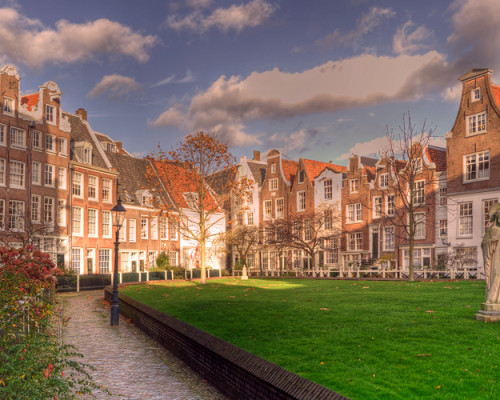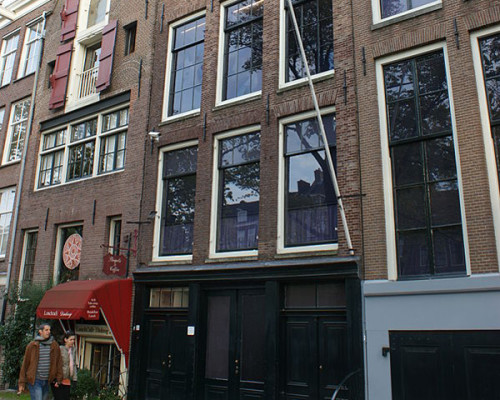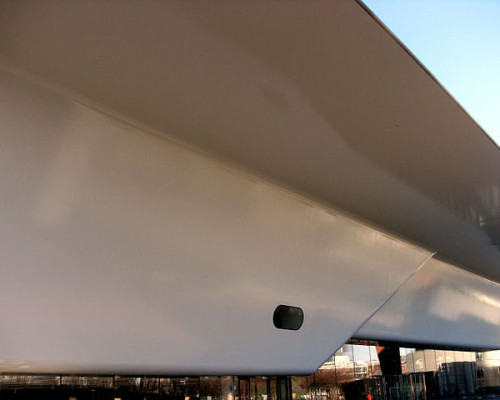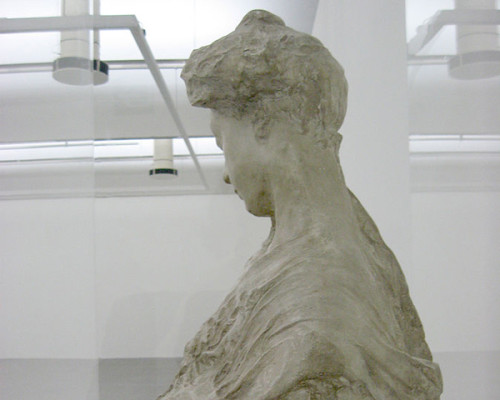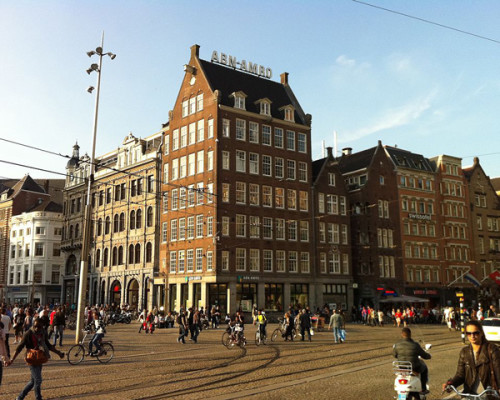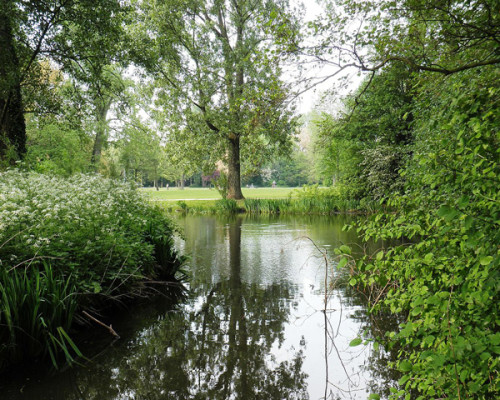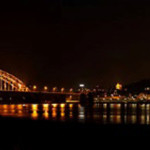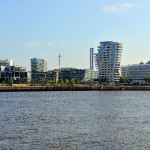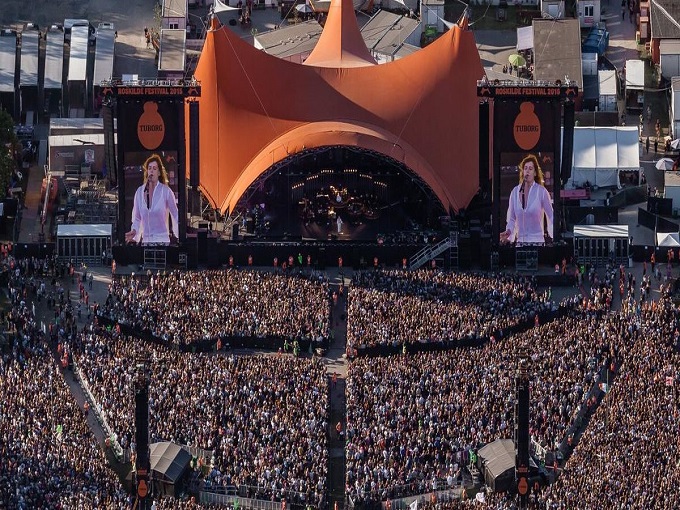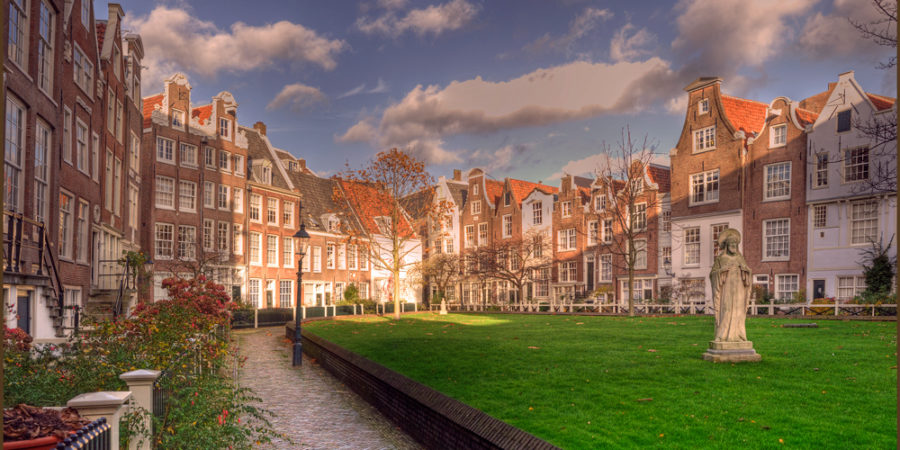
03 Jan Amsterdam
Amsterdam
The liberal and exuberant Amsterdam – commonly known just as ”Dam” – is the capital of the Netherlands and is located in the western side of the country. The river Amstel ends in the city centre and connects to a large number of canals. The city has appr. 830,000 residents, and about 1,5 million in the whole metropolitan area.
Amsterdam was granted city rights in either 1300 or 1306. From the 14th century on, Amsterdam flourished, largely because of trade with the Hanseatic League. The 17th century is considered as Amsterdam’s Golden Age, during which it became the wealthiest city in the world.
Significant areas
– Old Centre. The most popular area among tourists and known for its pubs, canals, coffeeshops and old architecture.
– Jordaan. The Museum Quarter and the Vondelpark are here.
– South. Prices are cheaper here than in the city center. Here is e.g. the Albert Cuyp Market.
What to do and see in Amsterdam
Begijnhof
This inner court is one of the oldest in Amsterdam, originally constructed in 1307. The buildings in the court are tall, characteristically Amsterdam-style town-houses. It was originally a béguinage, a community of the religious women who sought to serve God without retiring from the world. There are 47 regular town houses, in the area most of them have facades from the 17th and 18th century. The catholic ministry is still organizing masses and other ceremonies at the chapel in the area.
Anne Frank House
This historic 17th-century canal house and biographical museum, at the address Prinsengracht 263-265, is dedicated to the memory of Anne Frank, a Jewish girl who hid from Nazi occupation with her family and four other people in the hidden rooms of this house. Here she wrote her famous diary, chronicling her life from 12 June 1942 until 1 August 1944, before her death in Bergen-Belsen concentration camp in 1945. The museum holds the preserved hiding place, a permanent exhibition on the life of Anne Frank, and an exhibition space dedicated to all forms of persecution and discrimination. A site full of moving and tragic history.
The Stedelijk Museum
This museum at Museumplein 10 is concentrated on modern and , contemporary art and design. The collection comprises art and design from the early 20th century up to the 21st century, and it features artists such as Vincent van Gogh, Vasily Kandinsky, Marc Chagall and Jackson Pollock.
Pro tip for museum goers : The Museum Card covers the cost of admission to over 400 museums across the Netherlands and one can buy it at most major museums. See more about the museum area Museumplein here.
Damrak
This avenue running between Amsterdam Centraal in the north and Dam Square in the south. Its known for its picturesque canal houses and its plentiful pedestrian traffic, thanks to it being a popular thoroughfare. There are many cafés and restaurants along this avenue, and tram lines 4, 9, 16, 24, and 25 are operating in the area . The heartbeat of Amsterdam pulses loud here.
Vondelpark
This 47 hectare public park lies west of Leidseplein and Museumplein. It has an open-air theatre and four bar facilities. The theatre, Vondelpark Openluchttheater, has shows from June until August. Performances include classical music, pop music, world music, dance, musical theatre, and cabaret. Although all performances have free entrance, visitors are asked for a donation of one euro.
Recreation
- In summer Leidseplein is a square full of terraces packed with people drinking and chatting. Rembrandtplein is a center of nightlife. The Lovers Canal Cruise is a splendid way to get acquainted with the city’s canal network.
Shopping
- The main shopping district in Amsterdam is concentrated on a line, satrting near Central Station and heading to the Leidseplein: Nieuwendijk, Kalverstraat, Heiligeweg and Leidsestraat. The area is filled with good boutiques and top of the line clothing. Surrounding the city center there are some older areas. The main shopping streets there are the Kinkerstraat, the Ferdinand Bolstraat, the Van Woustraat, and the Javastraat. Javastraat is famous for its many exotic ethnic stores.
Photos: With the CC licence / Steve Collis, Mark Ahsmann, Nikanos, Miguel Hermoso Cuesta, Denis Apel, Eisenacher~commonswiki, Lokilech
| Amsterdam, Alankomaat | 7°C broken clouds | |
Wind
3 m/s, NW
Humidity
75%
Pressure
768.82 mmHg | ||
Top 5 in Amsterdam
- Jordaan district
- Albert Cuyp Market
- Pubbing in Rembrandtplein
- Begijnhof
- Canal cruises
How to get to Amsterdam
- The international Amsterdam Airport Schiphol is the main airport of the region, 9 kilometers south-west of Amsterdam. A list of its airlines is here, and destinations here.
- Most trains arrive and depart from the Amsterdam Centraal Station, located between the Old Centre and the IJ waterfront. Schiphol Airport also has its own train station.
- Thalys operates trains to/from Paris, Brussels and Antwerp, to Amsterdam. The IC train to Berlin runs every two hours and connects Amsterdam Central Station with Osnabrück, Hanover, and Berlin. See all European train timetables here.
- Eurolines offers bus routes from various European cities.
How to get around in Amsterdam
- Public transport within the city is operated by the GVB (Gemeentevervoerbedrijf). The OV chipcard is quite handy, offering a discount for heavy-users. The tram, with 16 lines, is the main transport system in the central area, and there are also dozens of night bus routes which run in place of the trams between midnight and 5am. There is also a metro system operating with four lines, and several free ferry services across the IJ river, to Amsterdam North, the most frequent one runs every 7min. They all leave from a new jetty on the northern (rear) side of Centraal Station. See the journey planner and timetables of the GVB here.
- Renting a bicycle is the easiest way to get around in the town area. See a route planner here. Bicycles can be taken on all metros and tram 26 using the bike supplement fee on the OV chipcard. One should use the special bike racks: locations are indicated by a bicycle sign on the outside of the carriage.

